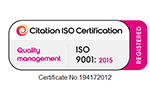Is your BEMS winter ready?
Winter is coming! But is your BEMS prepared for darker, frostier days?
When the clocks go back in Autumn, it’s only a matter of time before the cold weather creeps in. That makes it an ideal time to plan ahead. With clocks due to ‘fall back’ on Sunday 29th October (and yes, that does mean an extra hour in bed), it’s time to make some adjustments. Starting with your building energy management system (BEMS).
While there’s lots to look forward to in the run up to Christmas and New Year, things do get pricier. For businesses, like yours, soaring energy costs are a huge setback – thanks to all the extra heating and lighting. Energy hikes are inevitable, but what you can control is unnecessary wastage. Want to be as resourceful as possible this autumn and winter? Start by managing how your BEMS transitions between seasons. Here’s some helpful hints and tips.
Check your timings
Ahead of the GMT clock change on Sunday 29th October, the front-end terminal of your BEMS needs to be set correctly or scheduled to automatically adjust. Networked controllers can then be re-timed to reflect these changes. In fact, standalone control devices are also likely to have this feature.
Check your holidays
You’ll be out of office from Sat 23rd December, possibly up until 2nd January (if you aren’t working in-between). That’s 10 days’ worth of energy that could be saved. Set the dates you’re away in advance because you don’t want your HVAC plant services to continue running in an empty building.
Revisit your temperature setpoints
In an ideal world, heating systems would only be used in colder months and vice versa for cooling. In reality, both systems are likely to run simultaneously through the year.
So, how do you save on heating and cooling services this autumn and winter? Our advice is to consider the following:

– Get optimising
Optimise the ‘start/stop’ functionality of your plant. It’s a great energy saving feature, whereby heating and cooling services are started and stopped based on your BEMS ability to ‘self learn’. It learns your building’s thermal characteristics, according to predefined comfort settings in a defined occupancy period. By doing this, you’re negating a scenario where the heating system is set to start too early, simply because of a cold spell.
– Set achievable setpoints
Set your comfort temperature setpoints to achievable values and create a ‘deadband’ to minimise system conflict. For example, you can set your heating to 20°C, with cooling available if the temperature rises above 23°C.
Compensated temperature setpoints that factor in external and internal temperatures can be used to influence plant control. Perfect for colder mornings and warmer afternoons – and to maximise on the benefits of any solar gain (where possible).
Keep reviewing those settings
Continually reviewing the settings on your BEMS is good practice because you can make sure it accurately reflects your building’s usage and occupancy patterns. All while increasing energy efficiency and maximising cost saving opportunities.
If you haven’t already, you should carry out a test run of your heating system before the building is dependent on mechanical heating. That way, if any issues arise, they can be rectified before building operation and occupancy is compromised.
Contact us
Want to speak with one of our experts? We’d love to hear from you. We’ve got offices across the UK. Click here to check where your local office is and drop them a message.









